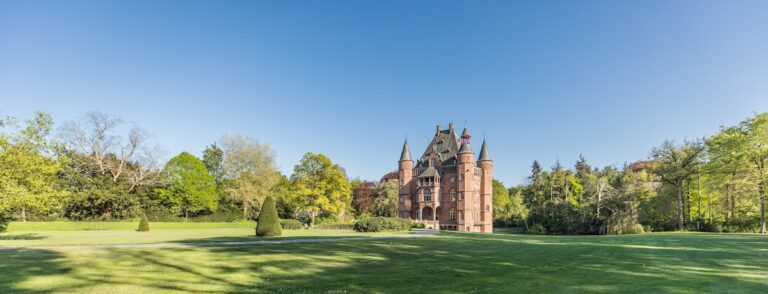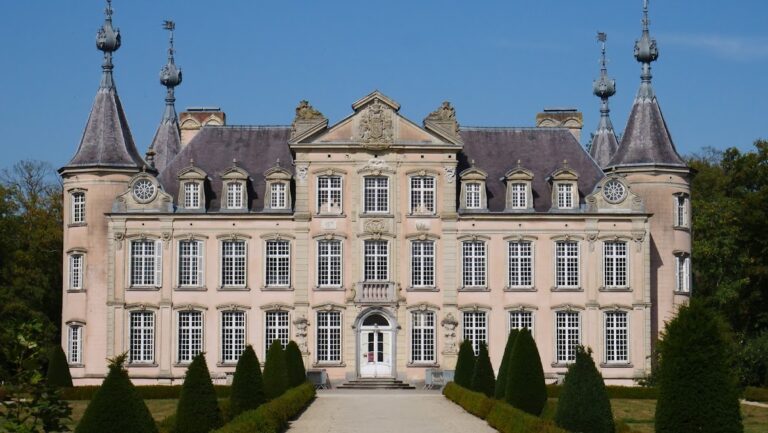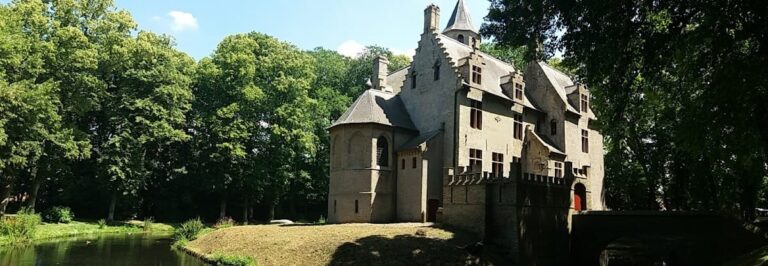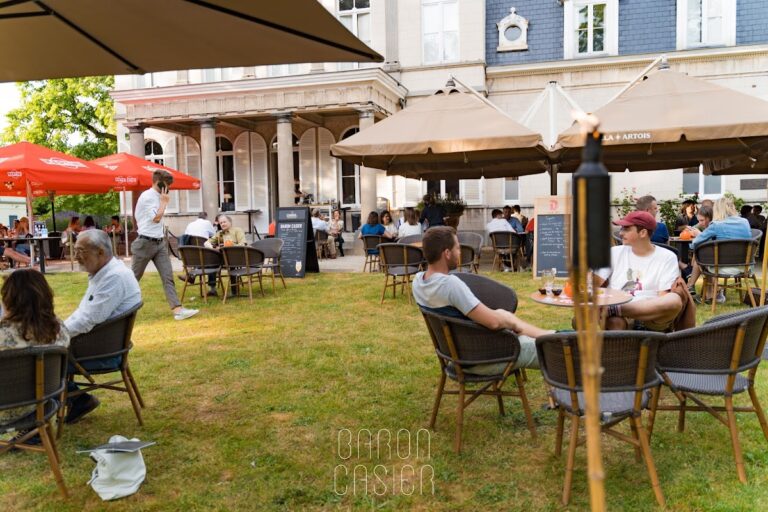Wijnendale Castle: A Historic Water Castle in Belgium
Visitor Information
Google Rating: 4.2
Popularity: Low
Google Maps: View on Google Maps
Official Website: www.visittorhout.be
Country: Belgium
Civilization: Medieval European
Remains: Military
History
Wijnendale Castle is located near Torhout in West Flanders, Belgium. It was founded at the end of the 11th century by Robert the Frisian, Count of Flanders. Initially, the castle served as a military base, as noted in the 1127 diary of Galbert of Bruges. Its strategic position in a forested area made it suitable for defense and control.
From the mid-12th century until the late 13th century, the castle became a regular residence for the Counts of Flanders. It hosted diplomatic meetings and functioned as a hunting lodge, taking advantage of the surrounding woods. In 1297, Guy of Dampierre, Count of Flanders, signed an alliance treaty with King Edward I of England at Wijnendale, marking its role in international politics.
In 1298, the castle passed by inheritance to the Counts of Namur, a branch of the Dampierre family. It endured heavy sieges in 1302 and 1325 but was rebuilt after each attack. The castle remained a residence until 1366 and is believed to have been the childhood home of Blanche of Namur, who later became Queen of Sweden through marriage.
After a period of neglect, Wijnendale was sold in 1407 to John the Fearless, Duke of Burgundy. Three years later, he transferred it to his son-in-law Adolf IV of Cleves as part of a dowry guarantee. In 1463, ownership passed to the Lords of Ravenstein, a cadet branch of the Dukes of Cleves. They transformed the castle into an elegant hunting lodge frequented by nobility. Philip the Handsome described it as the finest country house in Flanders.
The castle suffered damage in 1488 during conflicts following the death of Duchess Mary of Burgundy. Philip of Cleves repaired and expanded it, and by his death in 1528, the castle had three floors and over fifty rooms. Although the Dukes of Cleves owned it in the 16th century, they did not live there. The castle hosted notable guests such as Emperor Charles V and Regent Mary of Hungary. It was partially destroyed in 1578 during religious wars, including the burning of the donjon (main tower).
After Duke John William of Cleves died without heirs in 1609, the castle became the subject of dispute among German princes. By 1634, it passed to the Palatinate-Neuburg line following legal decisions. During Louis XIV’s campaigns in Flanders, French and Spanish troops alternately occupied the castle. In 1690, French forces destroyed the bridge, chapel, and prison. These were rebuilt around 1700, including a new brick access bridge.
The nearby Battle of Wijnendale in 1708, part of the War of Spanish Succession, caused heavy casualties but spared the castle from major damage. In the 17th and 18th centuries, the castle served as the residence of the lordship’s governor. The Palatinate-Neuburg dukes managed it mainly as a source of income from forestry and feudal rights.
The feudal system ended in 1792 with the French Revolutionary invasion. The castle was seized by the French state and reportedly operated as an inn before being destroyed by Napoleonic troops in 1811, leaving only ruins. In 1825, a Walloon industrial group bought the estate, cleared the surrounding forest, but later went bankrupt.
In 1833, banker Josse-Pierre Matthieu acquired the property and rebuilt the castle between 1837 and 1852, preserving the late medieval northern wing. His son, Joseph Louis Matthieu, hired architect Félix Laureys in 1877 to remodel the castle into a romantic medieval-style water castle. This renovation added two tall towers and a militaristic gatehouse inspired by 17th-century prints.
On 25 May 1940, after the Nazi invasion of Belgium, Wijnendale Castle hosted a crucial meeting between King Leopold III and his government ministers. This event played a key role in the post-war Royal Question concerning the king’s conduct during the occupation. The Matthieu family, renamed Matthieu de Wynendaele in 1953, still owns and partly lives in the castle. It was declared a protected monument in 1982, along with its surrounding forest and village landscape.
Remains
Wijnendale Castle is a water castle, meaning it is surrounded by water-filled moats, located in a forested area near Torhout. The current structure mainly dates from the 19th century, with the northern wing preserved from the 15th century. This oldest wing remains inhabited by the owners, while other parts were formerly open as a museum.
By 1528, the castle had three floors and more than fifty rooms, including many guest chambers, as recorded in an inventory after Philip of Cleves’ death. The 19th-century remodeling introduced two tall towers flanking the main building and rebuilt the gatehouse with a militaristic style. The new access driveway was aligned with the paved road leading to Torhout.
The castle grounds include a 19th-century icehouse and greenhouses, which were part of the museum circuit. Historically, the castle was surrounded by extensive forests used for hunting and generating income through forestry. The chapel of Notre-Dame de Wijnendale remains part of the estate and was included in the museum area.
In 1690, French troops destroyed key structures such as the bridge, chapel, and prison. These were rebuilt around 1700, including a new brick access bridge that replaced the earlier wooden one. The castle and its surrounding forest have been protected as a cultural landscape since 1980, with the castle itself designated a protected monument in 1982.










